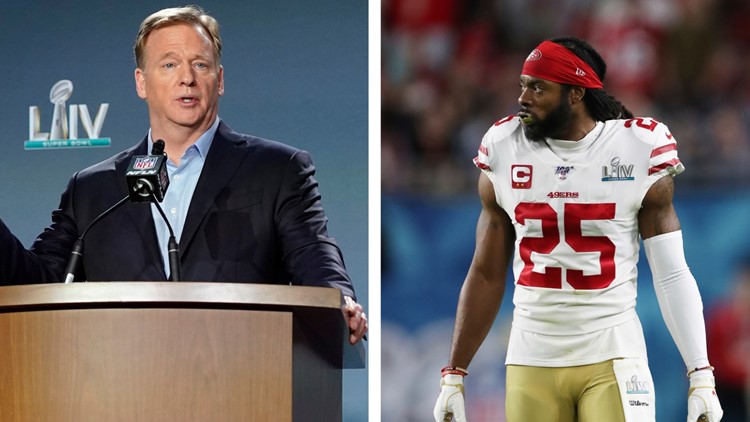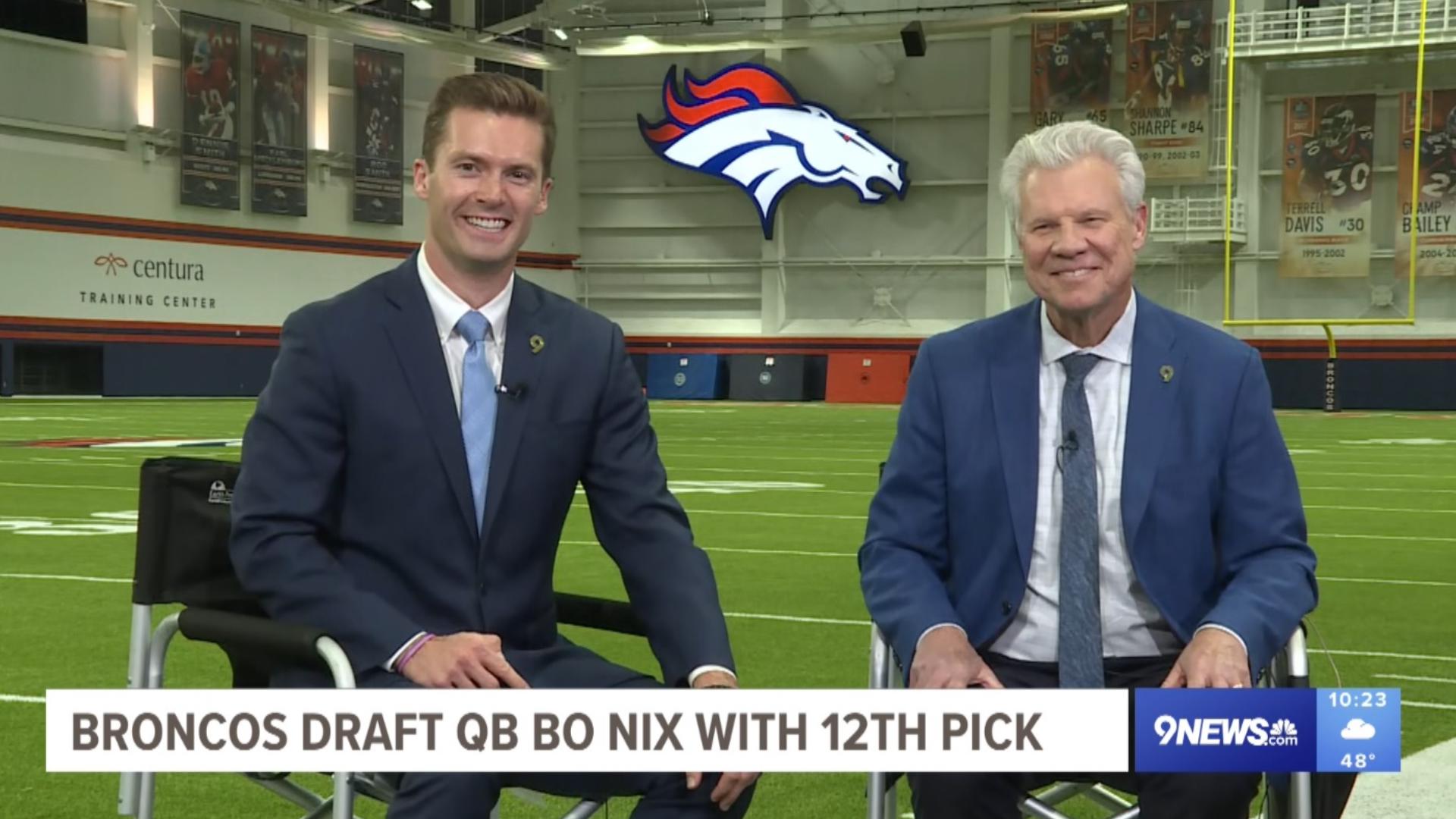DENVER — I thought about headlining this story, “The NFL’s New Collective Bargaining Agreement Proposal for Dummies.”
But football players are no dummies for so far getting this much out of owners from their working agreement.
All in exchange for a 17th game. It still must be voted on by the players, who have been receiving the proposal in recent days and should be prepared to vote.
Littleton-based NFL agent Paul Sheehy, one of the best in the business, had the foresight and resourcefulness to deliver a comprehensive, yet condensed 22-page summary of the proposed CBA to each of his clients. 9NEWS received a copy of that summary and condensed it further for the casual and diehard fan.
Let’s begin with the beginning and the end (of regular season) of the owners’ proposal: The 17th game.
The owners not only want it, they insist on it. If there’s no 17th game, there would be a lockout when the collective bargaining agreement expires after the 2020 season. Take it now in peace. Or take it a year from now and – oh by the way, Joe Player, did you save your money?
This may seem stern, but to be fair, it’s not so much the owners don’t care about their players’ well-being by making them play an extra game. It’s that the owners care about the product they sell to their fans.
And the degeneration of preseason games has made them a rip-off to customers, even if coaches and front-office football executives say they are a necessary evil.
One less preseason game, one more regular-season game for the next 10 season is the owners’ proposal.
A cynic, or even an idealist might ask: Doesn’t this mean owners put the fans’ entertainment value above the players’ well-being? Truth is, you can’t run a $15 billion a year business without possessing a cold-hearted sliver for capitalism. A 17th regular-season game would generate considerably greater national media revenue than a fourth preseason game.
But in return, owners will give the players this:
Minimum Salary Increases
Rookies to 9-year veterans would get one-year salary raises from $104,000 to $120,000 per year. 10-year vets would get a relatively modest $20,000 raise. Explanation to follow.
Service …….…….... 2019 …...…... 2020 ….… Pct.
Rookies …….…. $495,000 ...… $610,000 … +23.2
1 year …………. $570,000 ...… $675,000 … +18.4
2 years ….…….. $645,000 ...… $750,000 … +16.3
3 years ….....….. $720,000 ...… $825,000 … +14.6
4-6 years .....….. $806,000 ..…. $910,000 …. +12.9
7-9 years …...…. $930,000 … $1,050,000 ... +12.9
10+ years ....… $1,030,000 … $1,050,000 … +1.9
These minimum salaries would go up incrementally every year until even an undrafted rookie would make $1.02 million in 2029. How does that sound, Malik Reed?
The NFL and players union acknowledge that 60 to 70 percent of the players make at, or near minimum salaries at their respective service thresholds.
As for the nominal increase for 10-year players, two things. One, the thinking is if they last that long, they’re living on their own mega-deals anyway. Aaron Rodgers is a long way from minimum with an average salary of $33.5 million.
And two, 10-year players who aren’t stars found they weren’t getting jobs because of their $1.03 million minimum salaries. Teams were preferring 5-year pluggers at $200,000 less to fill their second units and play special teams.
This proposal lumps 10-year players with 7-9 year players which in turn gives 10-year players a better shot at extending their careers.
Yes, it’s perverse logic, but its logic nonetheless: The less you make, the better chance for employment. Union dynamics at its best.
One more thought: A 17th game in theory would reduce the chances of a player reaching 10 years of service. Then again, it usually takes three game checks in a particular year to earn a credited season. So it will be easier for a roster-bubble player to earn a credited season.
Player performance pool
The NFL paid out $188.88 million last year to players through their player-performance pool that uses a playing time vs. salary formula to determine year-end bonuses. In essence, the smaller a player’s salary and greater his playing time, the bigger the player-performance bonus.
As a for instance, Broncos center-guard Connor McGovern made an extra $300,952 in performance bonus from 2018, when he otherwise drew a $630,000 salary.
Anyway, the player performance pool bonuses are going up $8.5 million in 2020 and another $10 million in 2021.
Cashflow
Instead of getting paid over the 17-week season, players would now have their paychecks spread out over 34 weeks, or from September through mid-May.
Player share of revenue
Currently players get 47 percent of all league revenue. That would stay the same in 2020. Once the schedule goes to 17 games – the expectation is it would start in 2021 – players would start getting between 48.5 percent and 48.8 percent of revenues.
Playoffs
In exchange for two more playoff games, the players would get an additional $70 million to $75 million.
Team spending requirements
The 32 teams spent a combined $6.12 billion in cold-hard cash to players spending in 2019, up 4.8 percent from 2018. It’s the first time combined league salaries topped $6 billion.
That’s with teams required to spend 89 percent of the league’s annual salary-cap. Under the new proposal, teams would have 90 percent minimum.
With the salary cap expected to come in a $200 million this year, that means teams would have to spend at minimum $180 million in cash dollars on player salaries.
Roster increases
This means more jobs. Starting this year, a team’s active roster will increase from 53 to 55 players with game-day rosters expanding from 46 to 48 players with a requirement to activate at least 8 offensive linemen. (Most teams, including the Broncos, usually dress seven blockers).
Practice squad rosters will increase from 10 to 12 players in 2020, then to 14 players in 2022.
Practice squad weekly salaries will bump from $8,000 in 2019 ($136,00 per year) to $8,400 in 2020 ($142,800 per year) and up to $11,500 in 2022 ($195,500 per year).
Also three players can now return from injured reserve, up from two.
Retirement benefit improvements
This is a biggie. There would be an immediate 10 percent increase in all pension amounts. Under the new plan, a player with 10 years of service who waits until he’s 65 years old to start collecting his NFL pension would receive $1.4 million a year for the rest of his life.
We all know $1.4 million a year doesn’t buy what it used to. But at a time when many U.S. companies are either freezing or cutting pension plans, $1.4 million a year is jaw-dropping.
In addition, a player’s annuity for a vested vet (4+years) goes from $95,000 per year to $110,000 per year. Example: Broncos’ tight end Jeff Heuerman became a vested vet for the first time in 2019. He was welcomed to the service milestone with a $95,000 annuity the league opened for him.
This year, Heuerman would receive an additional $110,000 in his annuity under the new CBA proposal. The league’s annual annuity contributions would increase every three years.
401K match
Currently, the league contributes double what each player puts into their 401K plan – with a maximum player contribution cap of $26,000 per year.
So a player who puts in $26,000 per year to their 401K (and they better), would get an additional $52,000 per year from the NFL. Suffice to say, the 8 to 5er is not getting $78,000 worth of contributions into his 401K each year.
Under the new plan, the matching levels would increase contributions $2,000 every other year.
Medical plan enhancements
Vested vets (again, 4+seasons) would get 5 five full years of fully-paid health insurance for themselves and family after they retire.
The league’s annual Health Reimbursement Account (HSA) contributions would increase from $30,000 per player in 2019 to $35,000 in 2020 and it would reach $50,000 annually by 2027. The hope for every player is come five years after they’ve played their last game and their fully-paid medical plan goes away, they would have plenty of reserves in their HSA to help defray future medical issues.
Vision care would also be added to a player's health care plan for the first time.
Work rule changes
Basically, vested veterans (4 seasons or more) could play hooky from offseason workouts more often.
Vested vets could miss up to 5 days of offseason workouts, including one OTA and still earn their full workout bonus.
Thursday night games
It would be required that players get three full days off after a Thursday night game. (Broncos head coach Vic Fangio had been doing this, anyway).
Training camp
There would be 6 mandatory days off if a 16-game season; 8 days off if a 17-game season.
Reduction to 16 padded practices total and no more than three consecutive days in pads. (Note: There is far more heavy contact in padded practices than non-padded practices).
This means in-game execution could be worse. But players’ bodies, in theory, should be less banged up.
International games
There would be a league-wide maximum of 10 international games per year.
Any player that plays more than one international game in a season would receive an additional $5,000 stipend for each additional game.
Fines/discipline
On-field fines would be reduced by up to 40 percent. And then fines would increase by 3 percent per year instead of the current 5 percent increase.
Neutral arbitrator
This should be considered a win for the players. From now on, all commissioner discipline cases would be heard and judged by a neutral arbitrator that is jointly selected by the players union and the league. This includes personal conduct violations.
Drug policy changes
For players who have tested positive once for a banned recreational or performance-enhancing drug, they stay “in” the program for 24 months on first offense and indefinitely on second offense. Drug testing is merciless for players “in” the program.
In what would be a notable concession, first-time offenders would only be in the program for 60 days while Stage Two offenders would now get reviewed every 30 days.
- A positive test for marijuana would go from 35 nanogram/liter to 150 nanogram/liter. (At the very least, this eliminates fear of a positive test from second-hand smoke.).
- The drug testing period for players not “in” the program would be limited from 2 weeks to year with the window between the first day of training camp until the first preseason game.
- One area of the NFL’s drug policy that would face stricter penalties is with DUI-type violations. Broncos safety Kareem Jackson was suspended two games without pay for such an infraction last year. Such violations would bring a 3-game suspension (without pay) moving forward.
For all these enticements, adding a 17th game to the regular-season schedule is difficult for any player to accept. To some of the more vocal stars in the league, the increased health risk that comes with an added game is a non-starter.
But would they would be willing to forsake a portion of the 2021 season (the current CBA doesn’t expire until next year) and therefore a portion of promised increased salaries and health benefits for the greater health of future players? The players’ vote awaits.
RELATED: Broncos allowing Gotsis to move on
SUGGESTED VIDEOS: Sports



